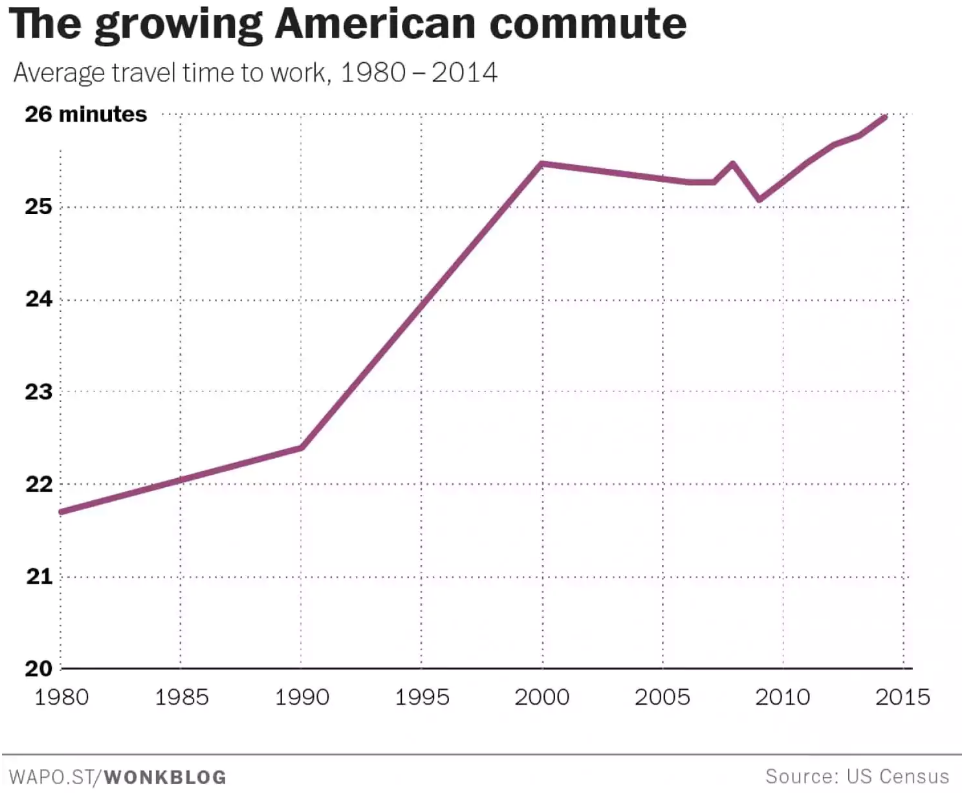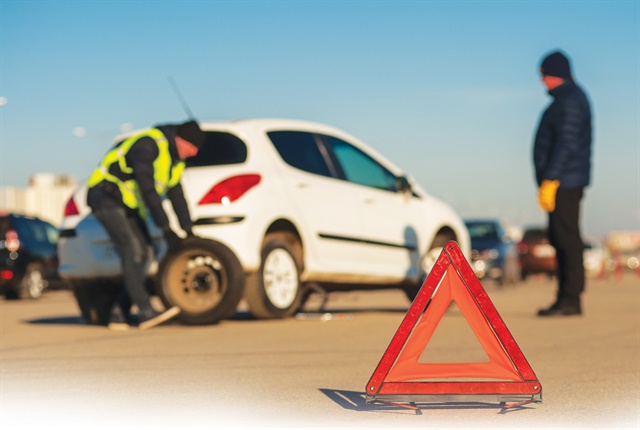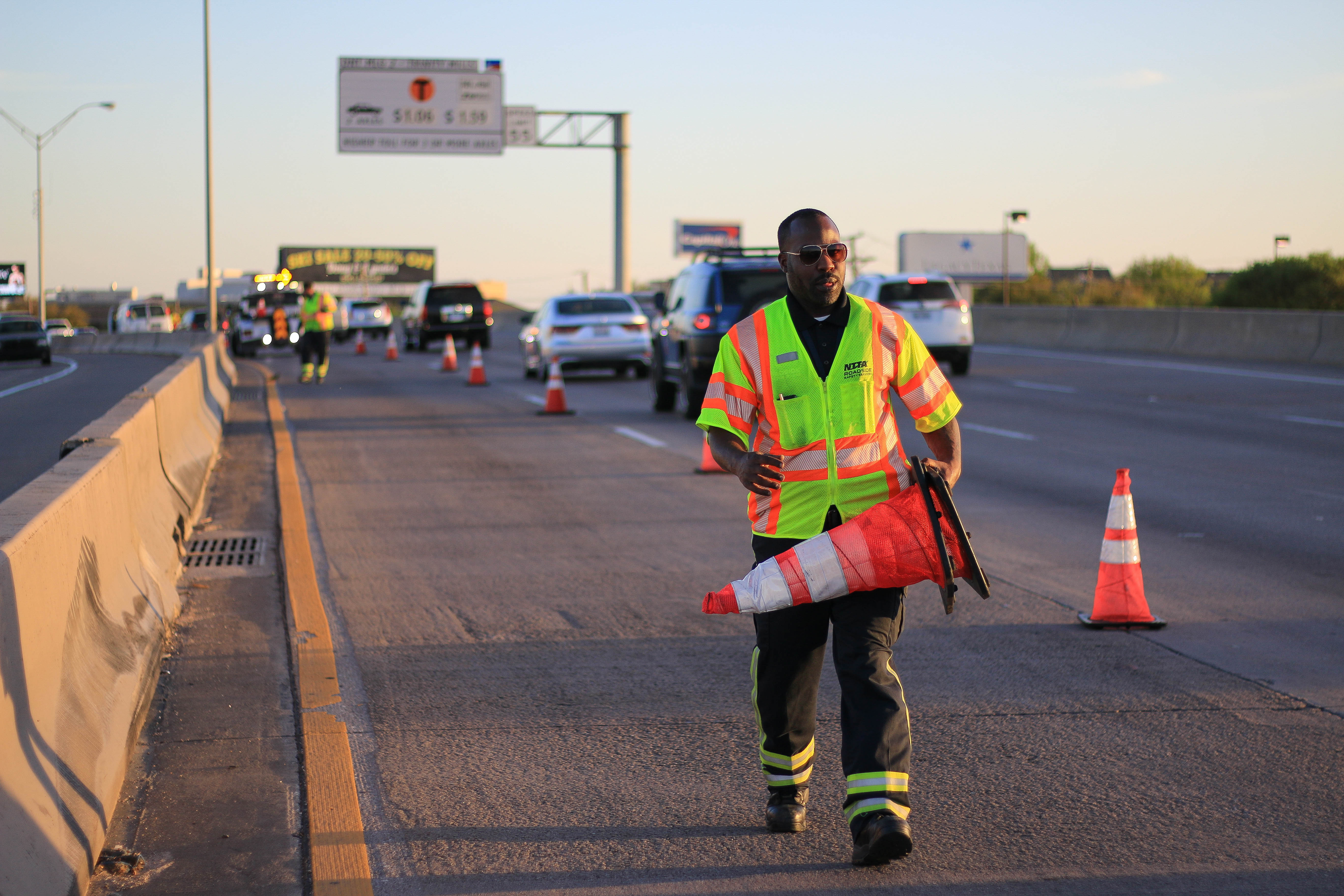How Far Should You Place Reflective Triangles
Increasing Time Behind The Wheel For American Drivers
Americans spend a good portion of their day driving from one place to another. Whether it's driving to the grocery store, commuting between home and work, a recent study from AAA shows that Americans average about 290 hours in their vehicle each year.

That is a lot of time spent sitting behind the wheel!
Spending this much time behind the wheel can have some side effects on your body and patience, but the real threat comes when something goes wrong during a commute.
Here is a list of the top safety items all drivers should have in their car to ensure that your commute is as safe as possible if a hazard happens on the road.
Basic Roadside Safety Equipment For Your Trunk
Many people have the essential equipment in their trunk to help them in the situation that their vehicle experiences mechanical issues on the side of the road. Some of the necessary equipment includes:
- An inflated full-size spare tire
- A kit to fix a flat tire
- A flashlight and battery
- Jumper cables
- Basic repair tools
- A blanket and extra clothing
- First Aid kit
Essential Roadside Gear To Consider For Your Car or Truck
While this basic emergency equipment will help most people safely in normal situations address a flat tire or fix an issue with their vehicle roadside.
However, there are some pieces of roadside equipment that all drivers should carry, but most do not have them in their trunk.
Here is a list of the roadside safety equipment that you likely don't have in your trunk, why you should have them, and also how to use them!
1. Traffic Warning Triangles
If your vehicle experiences an issue while you are driving, you should do your best to onto the far right shoulder. Once you are on the right shoulder, you should do your best to position the vehicle as far away from the road as possible.
Alerting oncoming traffic is one of the most critical elements to ensure your safety and the safety of other drivers. The best way to do this is to increase your visibility to other motorists.
The first thing to help improve your visibility is to turn on your emergency flashers and raise your vehicle's hood. This will make your vehicle a more massive object and more accessible to spot for oncoming traffic.
Once your hood is up, and flashers are on, you should place triangle reflector triangles near your vehicle to direct oncoming traffic away from your vehicle.
- As a rule of thumb, you should put the first warning triangle 10 feet directly behind your car on the side closest to the road.
- Then place the second warning triangle 100 feet behind your vehicle, lining it up directly in the middle of your car's position.
- Finally, put the third warning triangle 300 feet from your car, lined up with the side of your vehicle furthest from the road.
This alignment will help catch the attention of oncoming traffic and is the universal sign of distress when on the road.
Always watch for oncoming traffic and other dangers as you place the warning triangles behind your vehicle.
2. Safety Vests
When most people think of a safety vest, they immediately think of construction workers. While this occupation requires safety vests because they need to be visible on the job site.
Drivers should also keep a safety vest in their trunk for the same reason, and to ensure their safety if an accident or other hazard occurs on the road.

If you experience a flat tire or another incident while driving on the highway, you will need to expose yourself to oncoming traffic. This can be an intimidating experience, especially if you need to change a flat tire during the night or in severe weather.
Improving your visibility to oncoming traffic is vital in these situations, and a safety vest can help you fix your vehicle quickly and safely.
The Traffic Safety Store offers the perfect safety vests for drivers who want to have more peace of mind if something happens to their vehicle on the road. Our Economy Class 3 Safety Vest is an excellent solution to stow in your trunk and wear should you need to exit your car on the shoulder of a highway.
3. Pair of Day Wands
If you are traveling with other occupants who are old enough and able to warn oncoming vehicles of your presence, then it is a good idea to have a set of traffic wands in your car.
This is because as one person safely works to change a flat tire or address other issues with the vehicle, a second occupant can stand in the shoulder of the road with the traffic wands to warn oncoming traffic of your car's presence.
The person fixing a flat tire and the person with the traffic wands should both be a safe distance away from oncoming traffic, wearing appropriate safety gear, and staying alert to ensure everyone's safety.
When you purchase traffic wands, you want to be sure that they are durable, weatherproof, watertight, and capable of withstanding high-intensity effect. Additionally, it will come with a noninvasive grip and lanyard for effortless carrying.
Having a set of traffic wands in your truck and utilizing them after an incident occurs on the road will help you increase your visibility for oncoming traffic. The best thing is that these wands will help you stand out at any time of the day, and even in harsh weather.
4. High Visibility Apparel
So far we have looked at roadside safety gear that all drivers should keep in their trunk in case of an emergency, and depending on your geographic location, high visibility apparel could be needed.

In situations like heavy snow, fog, or rain, some emergency equipment may not be enough to help keep you safe as you address an incident with your vehicle on the side of a highway.
In extreme situations, certified safety apparel and weather protection gear could be the difference between life and death.
Our high visibility apparel utilizes the latest technology to improve your visibility, protect you from weather conditions, and offer superior durability and comfort.
All of our high visibility apparel provide improved protection from the temperature, moisture, and wind so you can address a flat tire or other needs on the roadside in extreme weather conditions without exposing yourself to further risk.
Prepare For The Worst With The Best Safety Gear In Your Vehicle
If you drive for more than 3 hours a week, you should have a basic set of tools, a spare tire, and a flashlight to make sure that you can repair a flat tire or other minor incident on the road.
However, if you are traveling a long distance or driving in severe weather, you should carry a set of additional gear in your car to have peace of mind on the road.
Be sure to review expected weather and consider the time of day that you are traveling when choosing the right roadside safety gear for your needs. Be safe on the road and prepare for the unexpected with the right roadside safety gear today!
(Visited 18,355 times, 1 visits today)
How Far Should You Place Reflective Triangles
Source: https://www.trafficsafetystore.com/blog/stranded-drivers-roadside-equipment-every-driver-trunk/
0 Response to "How Far Should You Place Reflective Triangles"
Post a Comment